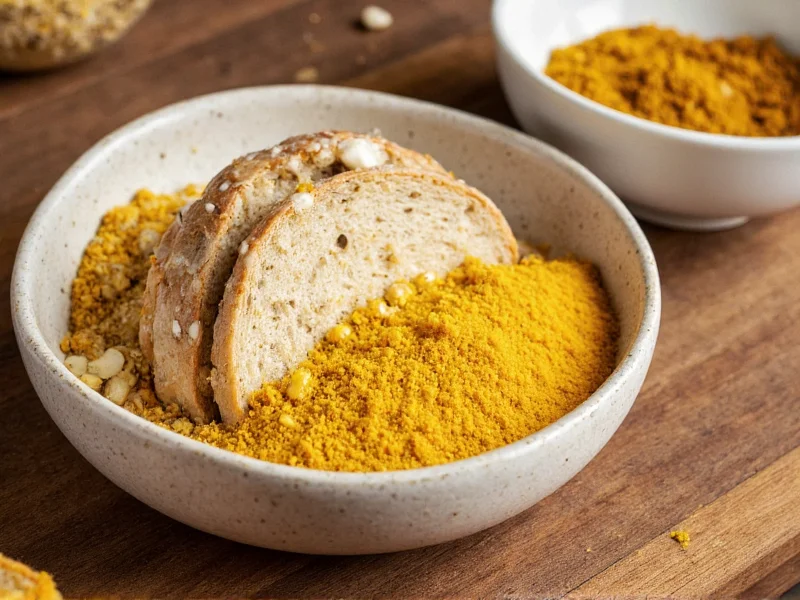When your recipe calls for dried mustard and your spice cabinet comes up empty, don't panic. Understanding how to properly substitute dried mustard ensures your dishes maintain that distinctive tangy flavor profile without compromising texture or consistency. This guide provides practical, tested alternatives that work across various cooking applications from sauces to baked goods.
Understanding Dried Mustard's Role in Cooking
Dried mustard, also known as mustard powder, serves multiple functions in recipes. It provides that characteristic sharp, tangy flavor while also acting as an emulsifier in sauces and dressings. When considering how to substitute dried mustard in recipes, remember it typically appears in small quantities (1-2 teaspoons) but significantly impacts overall flavor. The key compounds responsible for its pungency—sinigrin and myrosinase—activate when mixed with liquid, which is why proper substitution requires attention to both flavor and chemical properties.
Top Substitutes for Dried Mustard Powder
Not all substitutes work equally well in every application. The best dried mustard replacement depends on your specific recipe requirements and what ingredients you have available. Below is a comprehensive reference for effective substitutions.
| Substitute | Substitution Ratio | Best For | Adjustments Needed |
|---|---|---|---|
| Prepared yellow mustard | 1 tbsp = 1 tsp dried mustard | Marinades, dressings, meatloaf | Reduce other liquids by 1 tsp |
| Mustard seeds (ground) | 1.5 tsp = 1 tsp dried mustard | Pickling, spice rubs, hearty stews | Grind seeds first; add 5 mins earlier |
| Horseradish | 1 tsp = 1 tsp dried mustard | Beef dishes, Bloody Marys, strong-flavored sauces | Add 1/4 tsp vinegar for tang |
| Turmeric + vinegar | 1/2 tsp turmeric + 1 tsp vinegar = 1 tsp dried mustard | Yellow sauces, cheese dishes, mild applications | Add pinch of paprika for depth |
| Wasabi powder | 1/2 tsp = 1 tsp dried mustard | Asian-inspired dishes, seafood sauces | Dilute with water first; use sparingly |
Application-Specific Substitution Guidance
Understanding what can I use instead of dry mustard powder requires considering your specific recipe type. Each cooking application has unique requirements that affect which substitute works best.
For Baking and Cheese Sauces
When looking for dried mustard alternative for baking or cheese sauces, prepared mustard works surprisingly well despite adding liquid. The dairy in cheese sauces counteracts the additional moisture. For every teaspoon of dried mustard called for, use one tablespoon of prepared yellow mustard and reduce milk by one teaspoon. This maintains the sauce's proper consistency while delivering that essential sharpness that cuts through the richness of cheese.
For Marinades and Dressings
Homemade dried mustard substitute in vinaigrettes and meat marinades benefits from the emulsifying properties of prepared mustard. The vinegar content in prepared mustard actually enhances the marinade's tenderizing effect. When substituting in these applications, you can often use the full substitution ratio without adjusting other liquid ingredients, as the additional moisture helps distribute flavors evenly.
For Pickling and Preserving
Mustard seeds provide the most authentic flavor when you need a dried mustard substitution ratio for pickling recipes. Use 50% more ground mustard seeds than the dried mustard amount specified. Grind the seeds in a spice grinder or mortar and pestle just before use for maximum potency. The whole seed structure releases flavor more gradually during the pickling process, mimicking dried mustard's behavior.
Common Substitution Mistakes to Avoid
Many home cooks make critical errors when attempting mustard powder replacement in recipes. Understanding these pitfalls ensures better results:
- Ignoring moisture content - Liquid substitutes require adjusting other liquids in the recipe
- Using wasabi at equal strength - Wasabi is significantly hotter; always use half the amount
- Adding substitutes too late - Mustard compounds need time to activate; add substitutes early in cooking
- Overcompensating for flavor - Start with less substitute and adjust to taste after cooking
Testing Your Substitution
The most reliable method for ensuring your substitute works is the 'spoon test.' After incorporating your chosen substitute, remove a small spoonful of the mixture, microwave for 10 seconds, and taste. This gives you an accurate representation of the final flavor since mustard compounds fully activate with heat. Adjust as needed before proceeding with the full recipe.











 浙公网安备
33010002000092号
浙公网安备
33010002000092号 浙B2-20120091-4
浙B2-20120091-4